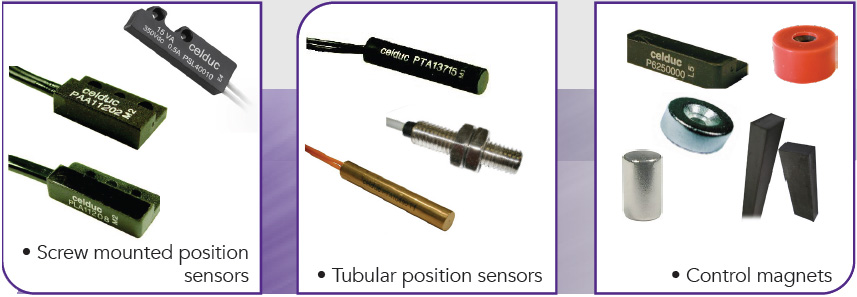Blog - OUR MARKETS - Detecting position/presence in Handling equipment

Material Handling Equipment sector represents an integral part of the supply chain of diverse industries. The rising need for global production companies to automate operations, and foster flow of goods in an efficient manner is the key force driving the market, at present. Growth in the market is also driven by improving investment in the construction and industrial sector.
One of the major driving forces in this sector is the increased focus on operator safety and productivity, as well as realizing efficiencies in manufacturing and warehousing operations. In the global Hoists & Cranes segment, USA, Canada, Japan, China and Europe will drive the 3.9% CAGR estimated for this segment.
Material handling equipment and systems are crucial to many companies that need to handle and store bulk material. Material handling equipment usually falls under four main categories :
Many companies in various industries use material handling equipment which find application in areas of construction, shipping, logistics, energies and industries.
Lifting equipment is one of the most challenging outdoor applications for sensors as any device installed on a platform is subject to extreme conditions such as :
These applications require reliable and accurate detection by magnetic proximity sensors and therefore equipment manufacturers must use components that meet the highest quality standards to guarantee safe operation.
Magnetic sensors are used for the detection of positions without contact or wear and tear. They are used where very long sensing ranges are required.

To explain this process of controlling the lifting operations, we will take the example of Scissor lift platforms.
A scissor lift platform is a mobile scaffold used to raise people and materials. The platform goes up and down using crisscrossed beams that move in a scissor-like way, the lifting mechanism moves only vertically. The operator generally uses a desk for controlling the movements of the aerial lift.
In these scissor lift platforms it is necessary to detect the different heights and thus have constant feedback on the position of the crisscrossed beams. Sensors are therefore mounted on moving parts. It is indeed necessary to take into account the different detection zones required due to the extension of the arms (the cylinder piston may stop in a different position from one machine to the next).
This process ensures secure operation of the platform.
In mobile cranes, for operator safety reasons, several positions have to be detected :
-Magnetic sensors are used to confirm the position of the telescopic boom. Mobile cranes have a telescopic boom that extends and retracts. Monitoring the position of the boom will prevent the operator from being hit by it.
-It is also necessary to ensure that the rear door is locked and secure.
-Magnetic sensors are also used to monitor the position of the operator’s cab and the position of the outriggers : extended or retracted. Indeed, lifting equipment is not intrinsically stable due to its design: its stability is linked to the extension of the stabilizers and it is therefore important, for safety, to detect their position: extended or retracted.
Reliability is the primary need for our customers as a typical environment for this application includes dirt, sand, dust, debris, oils, and salt . These challenges would cause a typical sensor to frequently fail. This is why our customers have chosen celduc® brand of magnetic proximity sensors.
Magnetic sensors are characterized by high vibration immunity and shock insensitivity. They can operate in harsh environments (humidity, dust).
In addition, no power supply necessary.
Finally, the detection distances are precise and regular (this is also true in harsh conditions), which is essential for the reliability of the system.
OUR INNOVATION = YOUR ADVANTAGES
Our skilled and innovative R&D department will work with you to assess and determine your specific needs and the feasibility of your project. Working closely with you, they will oversee the development of the product that best fits your needs, manage the progress of the project and ensure resources are being properly assigned.
Download our brochure “Magnetic sensors for lifting equipment”